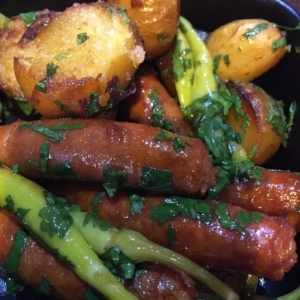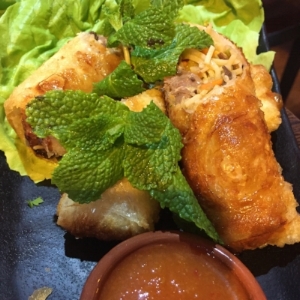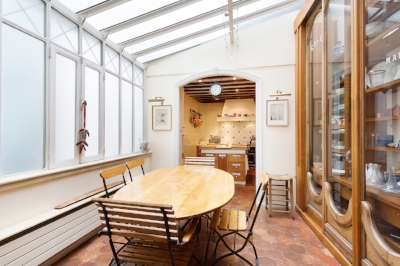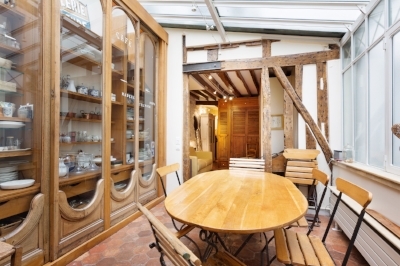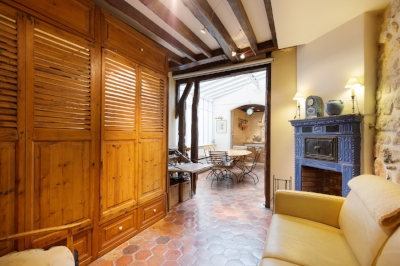If you are on a quest to find the crunchiest, freshest Vietnamese fried spring rolls in Paris, you can end your search at the doors of Do et Riz. Make a reservation, or be prepared to queue out into the street, as you will not be the only one clammering for a table or a stool at this charming canteen in the 12th arrondissement, run and owned by Vietnamese chef Do Thi Thanh Huyen. (The word Do, dually meaning ‘bean’ in Vietnamese and the chef’s maiden name, and riz meaning rice in French, are both ingredients important to Vietnamese cooking.)
Having been anointed with the passion for cuisine while helping run her grandmother’s road-side restaurant in Hai Phong in northern Vietnam as a child, chef Do now finds herself the third generation in a line of female chefs. After a brief flirtation with French cooking at Alain Ducasse’s Jules Verne restaurant in the Eiffel Tower and Restaurant Beauvilliers in the 18th, Do has returned to her native cuisine, with her husband at her side in the kitchen. The small eatery makes clever use of the space, reminiscent of an outdoor street market in Vietnam: The steamy, fragrant, open kitchen bustles with activity, and shelves are stacked with beautiful Vietnamese-sourced ceramics and bunches of fresh mint and coriander. The countertop bar in the restaurant’s window overlooking the kitchen is particularly appealing for dining solo or as a couple, beneath the light of the suspended sea urchin lampshades.
Do et Riz offers a roster of Vietnamese classics on the small but ultra-fresh menu (ingredients are sourced daily from the nearby marché d’Aligre), including the aforementioned golden crunchy chicken and prawn spring rolls (nems); Bahn Cuon steamed rice crepe rolls filled with chicken and mushrooms: fresh spring rolls with duck breast and green papaya:, and there’s always some version of a green papaya or lotus salad, refreshing and pleasingly spicy. The Pho soup and Bo Bun noodle salad are a staple of the menu (an explosion in the popularity of the Bo Bun in Paris in the last five or so years means that it’s almost impossible to find a Vietnamese restaurant that doesn’t serve it), but the main course menu changes more frequently. On our last visit we sampled chicken meatballs perfumed with kaffir lime, and served with a spicy tamarind sauce; and a prawn coconut and noodle salad, fresh and invigorating, filled with Asian greens, mange-tout green beans, carefully butterflied tender pink prawns, all showered generously with fresh coriander.
Their seductive version of a classic tapioca coconut pudding is alone worth returning for: creamy, not too sweet, and punctuated with the refreshing tang of perfectly ripe mango.
And now here’s another reason to return to sample Do and her husband’s cooking, with the announcement of plans to soon open a second restaurant across the street. It will be named Em (meaning younger sibling in Vietnamese), focusing on grilled dishes.
Do et Riz | 31 rue de Cotte | Paris 12 | +33 1 43 45 57 13 | Métro: Ledru-Rollin | Open Monday dinner – Sunday lunch. Closed Sunday dinner and Monday lunch | Lunch and dinner 30-35€ (for 3 course) | Rservations essential.
For more Paris restaurant reviews, get The Food Lover's Guide to Paris 5th edition, or download the app!







